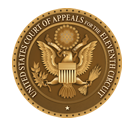My first thought when I read the new ruling in the Georgia State copyright lawsuit brought by publishers over e-reserves was of one of those informal rules that all law students learn — don’t tick off your judge. From the first days of the original trial, the arrogant antics of the attorneys representing the publisher plaintiffs — Oxford University Press, Cambridge University Press, and Sage Publishing — clearly put them in a bad light in the Judge Evans’ eyes. Those chickens came home to roost in this latest opinion, especially where the plaintiffs are chided for having filed a declaration about what licenses were available for excerpts back in 2009, even after the Judge told them not to, since that information had not been introduced as evidence in the original trial. All of that evidence was stricken, and the Judge based her new opinion on the evidence that was before her in that first trial. I can imagine that the publishers might use that ruling as a basis for yet another appeal, but if they do so, they had better be able to prove that the evidence is genuine and reliable, and to explain why, if it is, they did not produce it at trial back in 2011.
But I have put the cart before the horse; let’s look at the ruling we just received from the District Court. In case some have lost track, this case was originally decided by a 2012 ruling by Judge Evans that found infringement in only five of 74 challenged excerpts, and awarded court costs and attorney’s fees to GSU as the “prevailing party” in the case. The publishers appealed that decision to the Eleventh Circuit Court of Appeals, which vacated the trial court holding in 2014, sending the case back to Judge Evans with a set of instructions on how to improve the fair use analysis for these challenged excerpts. As has been noted many times before, the publishers lost nearly all of the big principles they had wanted to establish in the case; the Court of Appeals refuted most of the publishers’ arguments even as it did what they asked and vacated the first ruling.
Now, using the new fair use analysis directed by the Court of Appeals, Judge Evans has handed the publishers yet another loss. One wonders how many times they will have to lose this case before they finally learn something about the state of copyright law today. Still, this loss for the publishers is only the oddest sort of victory for libraries.
The new fair use analysis that Judge Evans uses is carefully designed for situations where the challenged use in not transformative; the non-transformative nature of the use means that the small portions used must be scrutinized very carefully, and it means that the fourth factor — the potential impact of the use on the market for or value of the original — gets extra weight. It is very important to notice this fact, because it means that this analysis used by Judge Evans will not be applicable in many other situations, especially in academia, where the uses are, unlike with e-reserves, transformative.
Even though both the trial court and the Court of Appeals have held that e-reserves are not transformative, both courts have affirmed that the first fair use factor — the purpose and character of the use — will still favor fair use when that purpose is non-profit and educational. So throughout this new decision, Judge Evans continues to hold that the first factor always favors fair use.
The analysis of the other factors has changed, however. For factor two, the nature of the original, Judge Evans does not make a blanket assumption, owing to instructions from the Eleventh Circuit, but looks at the nature of each excerpt. In most cases, she finds that informational matter is mixed with more individualized scholarly commentary, and the result is that this factor is usually neutral — neither favoring nor disfavoring fair use. In the few cases where it counts against fair use, it has little impact (the Judge says this factor is only 5% of each decision).
In the same way, factor three now gets a more careful and specific analysis. The 10% or one chapter rule that Judge Evans used in her first opinion is gone, at the instruction of the Court of Appeals. Instead, Judge Evans looks at each excerpt and evaluates its appropriateness to the allowable purpose (from factor one) and its potential to substitute for a purchase of the book (market substitution, anticipating factor four). In many cases, she finds that the excerpts are a very small number of pages and a small percentage of the entire work (so not a market substitute), are are also narrowly tailored to accomplish a specific teaching objective. In those cases, this factor will favor fair use.
Factor four, which the Judge now believes should constitute 40% of the fair use decision in this particular situation, is where most of the action is in this ruling. The analysis, the Judge says, is two-fold, looking at both harm to the potential market for the original and harm to the value of the work, which means looking at the importance of the licensing market. About this latter source of potential value, the Judge says that she must decide “how much this particular revenue source contributed to the value of the copyright in the work, noting that where there is no significant demand for excerpts, the likelihood of repetitive unpaid use is diminished” (p. 9). The result of this inquiry is that a lot of financial information about each book — its sales over time and the amount of revenue derived from the permissions market — is very important in the fourth factor analysis. The charts for many of the books that reflect this information make for fascinating reading, and contain information I suspect the publishers would rather not have made public. This is where it becomes most difficult for libraries to apply the analysis that Judge Evans is using, because the Court has access to information, and time to analyze it, that is not available to libraries as they consider e-reserve requests. Still, I think it is important to note that the standard the Judge is using in this evaluation is pretty high and it is focused on value to the authors and to users:
[W]e must determine how much of that value (the value of the work to its author and the potential buyers) the implied licensee-fair users can capture before the value of the remaining market is so diminished that it no longer makes economic sense for the author — or a subsequent holder of the copyright — to propagate the work in the first place (page 8, quoting the 11th Circuit).
In other words, this analysis is opening up a significant space in the idea of market harm, which permits potential fair users to diminish the value of the work in question to some degree, as long as that reduction in value is not so steep as to discourage writing and publishing these academic books. Licensing, in this analysis, is the remedy only for that kind of steep loss of value; it is not a mere right of the copyright holder to obtain all the value from the work that is possible.
Judge Evans applied this complex formula for fair use to 48 challenged excerpts. It was only 48 because for 26 of the ones discussed in her original ruling she found that there had been no prima facie case for copyright infringement made out, either because the publishers could not show they held the copyright or because there was no evidence that any students had used the excerpt. This part of the ruling was not challenged, so only these 48 fair use rulings had to be redone. Bottom line is that she found fair use for 41 of the 48, and infringement only in seven cases. As Brandon Butler points out in his discussion of the ruling, even that might overestimate the infringement, since it appears that the summary in the decision may list at least some instances of infringement that were actually found, in the specific analysis, to be fair use.
So this ruling, like each ruling in the case, is clearly a disaster for the plaintiff publishers. Once again it establishes that there is significant space for fair use in higher education, even when that use is not transformative. Nevertheless, it is a difficult victory for libraries, in the sense that the analysis it uses is not one we can replicate; we simply do not have access to the extensive data about revenue, of which Judge Evans makes such complex use. So what can libraries do, now that we have this additional “guidance” about e-reserves from the courts? I think there are two fundamental takeaways.
First, we should continue to do what we have been doing — making careful fair use decisions and relying on those decisions when we feel the use is fair. While we do not have much of the information used by the Court in this latest ruling, we still do have the security provided by section 504 (c)3 of the copyright law, which tells us that if we make good faith fair use decisions we, as employees of non-profit educational institutions or libraries, are not subject to statutory damages. This greatly lowers our risk, and adds to the disincentive to sue academic libraries that must surely stem from the GSU experience. All we can do, then, is to continue to think carefully about each instance of fair use, and make responsible decisions. We still have some rules of thumb, and also some places where we will need to think in a more granular way. But nothing in these rulings need fundamentally upset good, responsible library practice.
The second takeaway from this decision is that we should resort to paying for licenses only very rarely, and when there is no other alternative. The simple fact is that the nature of the analysis that the Court of Appeals pushed Judge Evans into is such that licensing income for the publishers narrows the scope for fair use by libraries. To my mind, this means that whenever we are faced with an e-reserves request that may not fall easily into fair use, we should look at ways to improve the fair use situation before we decide to license the excerpt. Can we link to an already licensed version? Can we shorten the excerpt? Buying a separate license should be a last resort. Doing extensive business with the Copyright Clearance Center, including purchase of their blanket campus license, is not, in my opinion, a way to buy reassurance and security; instead, it increases the risk that our space for fair use will shrink over time.
[personal note — this will certainly be my last word here at the Scholarly Communications @ Duke site, and it is fitting that it deal with the Georgia State case, about which this site has seen so much commentary. For the sake of continuing this conversation and including more discussants, I am also going to post this piece on the new group blog of which I am a part, IO: In the Open. Apologies if the repetition is annoying to anyone.]






